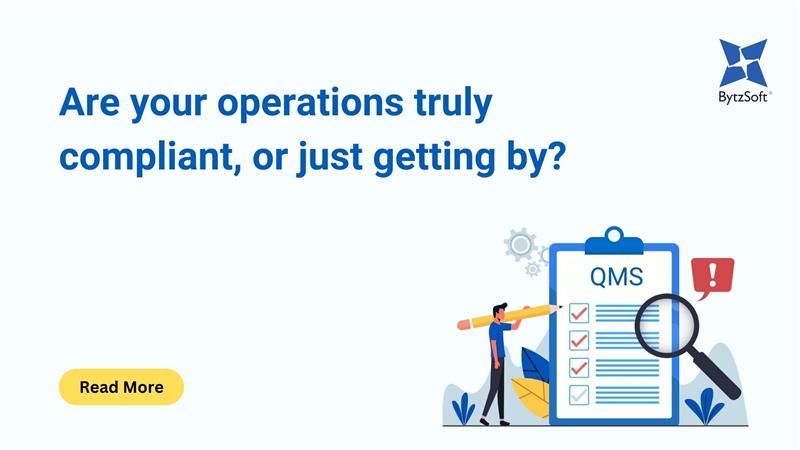In the highly regulated aviation industry, safety and compliance aren’t just priorities; they’re essential to sustainable operations. With the complexity of aviation workflows, from crew scheduling to aircraft maintenance, implementing a robust Quality Management System (QMS) becomes crucial. Integrated QMS platforms like FlyPal provide a centralized solution for managing quality, safety, and compliance, helping airlines and maintenance organizations improve safety standards while reducing operational risks.
Why Quality Management Systems (QMS) Matter in Aviation
Quality Management Systems in aviation provide a structured approach to maintaining high standards of safety, regulatory compliance, and operational efficiency. Given the industry’s high stakes, QMS help organizations not only meet but often exceed regulatory expectations, ensuring a safer environment for crew, passengers, and ground staff.
Integrating safety management software and compliance software within QMS allows organizations to proactively address safety risks while simplifying regulatory adherence. These tools support a wide range of functions, including internal audits, corrective action management, training and documentation control, which are essential to sustaining safety and quality across all operational facets.
Core Features of Modern Aviation QMS Software:
Today’s QMS platforms are often cloud-based, making them accessible across multiple locations and devices. Key functionalities include:
- Internal Audit Management: Regular audits are essential for identifying non-compliance and potential hazards. QMS software streamlines this process, offering insights into operational effectiveness and adherence to aviation safety standards.
- Corrective and Preventive Actions (CAPA): Effective CAPA management is crucial for addressing and preventing non-conformances. QMS platforms provide tools for tracking corrective measures, helping organizations ensure swift responses to safety and compliance issues.
- Document Control: Aviation QMS software centralizes document storage and version control, ensuring that everyone has access to the latest procedures and policies. This reduces risks associated with outdated documentation.
- Risk Assessment and Management: Integrated aviation risk management software enables proactive identification of potential hazards. By assessing risks before they become issues, organizations can implement mitigation strategies that keep both safety and efficiency at peak levels.
- Crew and Inventory Management Integration: QMS often integrates with crew scheduling software and aviation inventory management software to ensure that all resources meet compliance standards. This integration helps keep qualified personnel available while ensuring that all equipment is well-maintained and ready for safe operation.
Strengthening Aircraft Maintenance with QMS
Aircraft maintenance is a critical area where QMS can make a transformative impact. Integrated aircraft maintenance tracking software enables organizations to plan, track, and document all maintenance activities in compliance with regulatory standards. By providing a complete overview of the maintenance lifecycle, this software ensures adherence to prescribed schedules and supports transparency in reporting.
Aviation maintenance tracking software also helps capture a detailed history of repairs and inspections, allowing maintenance teams to identify recurring issues and address them proactively. Additionally, QMS integrates with aviation MRO software to manage maintenance, repair, and overhaul processes, making it easier to optimize aircraft uptime and ensure safety.
Enhancing Operational Efficiency with an Integrated QMS
Beyond compliance, a QMS enhances operational efficiency across various departments. Automation of routine processes allows staff to focus on critical tasks, saving both time and resources. For example, flight crew management software and crew rostering software ensure crew schedules align with duty time limitations, reducing the risk of fatigue and improving overall safety.
Furthermore, fleet management within the QMS provides a consolidated view of aircraft operations, enabling informed decision-making around fleet utilization. This comprehensive oversight optimizes resource use and ensures that all compliance and safety data are up-to-date.
Proactive Compliance with Regulatory Standards
Safety Management System ensures that safety protocols are systematically documented, reviewed, and improved over time. This proactive approach to regulatory compliance not only minimizes the risk of non-compliance but also strengthens the organization’s safety culture by making it an integral part of daily operations.
Conclusion
In today’s aviation industry, where safety and compliance requirements are increasingly complex, an integrated Quality Management System offers immense value. By combining functionalities like safety, compliance, and risk management, QMS software helps airlines and maintenance providers achieve excellence in safety and efficiency.
Implementing a comprehensive system like FlyPal QMS doesn’t just meet regulatory standards—it sets a foundation for continuous improvement, allowing organizations to maintain safer, more efficient, and more resilient operations!

